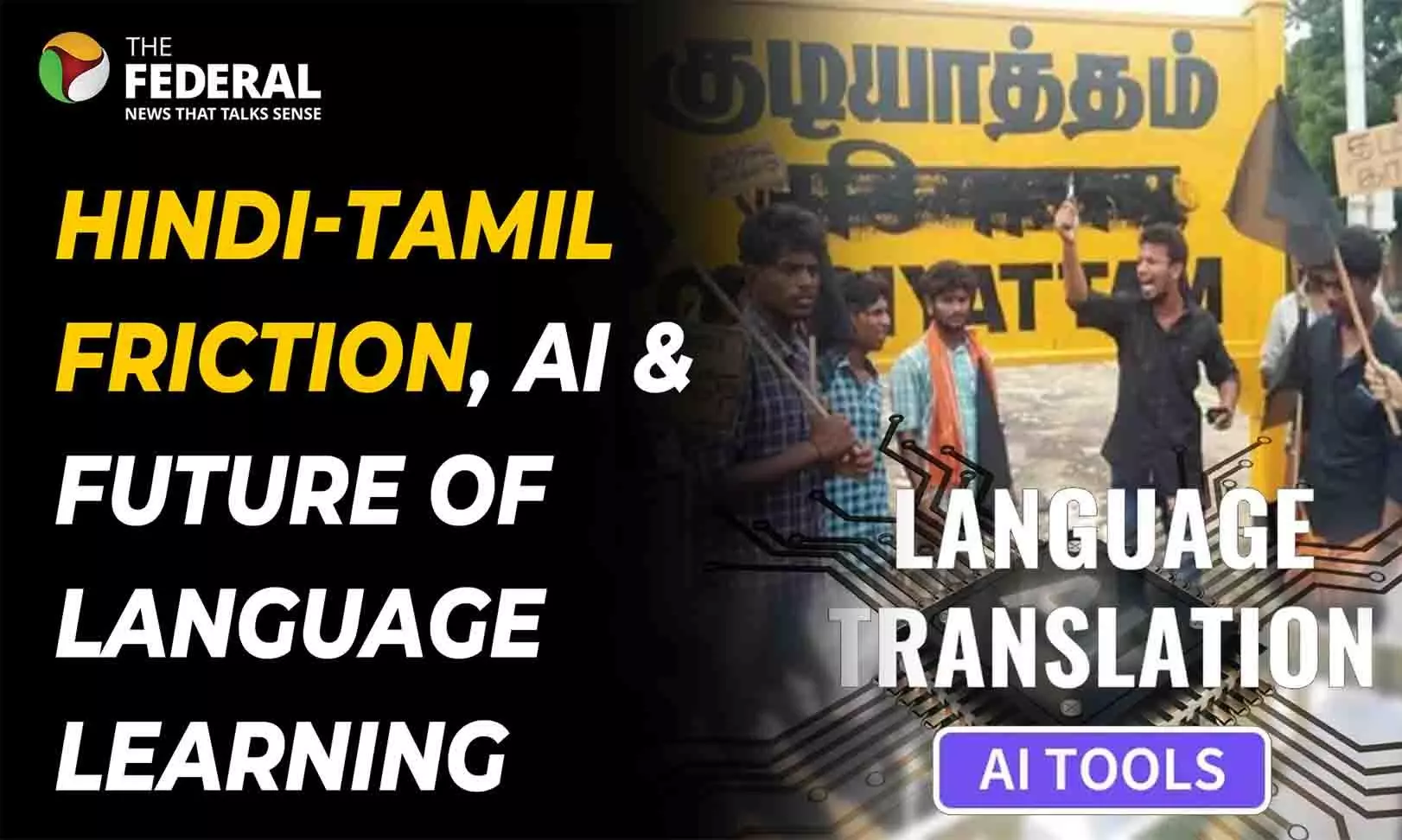
AI translation tools vs language learning: Can AI eliminate need to learn Hindi?
AI translation tools like Google Translate are bridging language gaps, but can they replace the need for learning languages like Hindi? Experts weigh in

The debate over the imposition of Hindi in non-Hindi speaking states like Tamil Nadu continues to stir controversy, especially with policies like the National Education Policy (NEP) promoting Hindi learning. While some believe Hindi could serve as a common link language, others argue that it could undermine linguistic diversity and regional identities.
However, AI-powered translation tools are rapidly transforming how people communicate across language barriers. Platforms like Google Translate, Microsoft Translator, and India’s Bhashani Initiative now offer highly accurate real-time translations. This has raised a new question: Does the growing role of AI in translation make learning new languages, like Hindi, less essential?
AI-powered tools have significantly improved communication, but experts wonder if they can completely replace the traditional need for language learning.
AI tools changing communication dynamics
AI-driven models such as AI for Bharat, Google's Indic AI, and Microsoft's Indian Language APIs are further improving translations by adapting to regional dialects and cultural nuances. These advancements allow people to interact effortlessly across different languages, breaking down barriers that once made multilingual communication difficult.
These tools have made it easier to communicate across languages, but AI experts emphasize that while AI can assist in basic communication, it cannot replace the deeper aspects of language learning. “Yes, AI can help with basic communication,” says Venkat Raghavan, AI expert. “But it cannot replace the entire process of learning a language.” He stresses that language encompasses much more than simply knowing a few phrases like "vanakkam" or "namaste"; it is deeply tied to culture and identity.
The essence of language and culture
Venkat further explains that every language carries a profound emotional connection to its speakers, something AI translations may never fully capture. While AI tools make communication more accessible, they cannot replicate the rich, cultural depth of a language that is learned through immersion and practice.
"Learning a language isn't just about speaking it; it’s about connecting with the culture and emotional context it carries," Venkat notes.
AI’s role in multilingual media
At The Federal, AI tools play a crucial role in enhancing multilingual communication in the newsroom. The platform now produces content in multiple languages, including Hindi, Telugu, Kannada, and English, with plans to add Gujarati and Marathi. AI models, developed with proprietary Federal training data, help generate stories from videos in various languages.
As Venkat explains, “We use AI to scale our multilingual content, but it still needs editorial oversight.” He points out that while AI-generated stories make the work of editors easier, the content still requires review to ensure it is culturally appropriate and accurate.
The content above has been generated using a fine-tuned AI model. To ensure accuracy, quality, and editorial integrity, we employ a Human-In-The-Loop (HITL) process. While AI assists in creating the initial draft, our experienced editorial team carefully reviews, edits, and refines the content before publication. At The Federal, we combine the efficiency of AI with the expertise of human editors to deliver reliable and insightful journalism.

